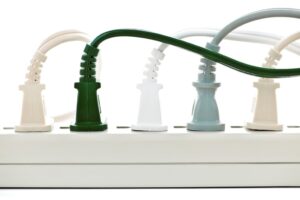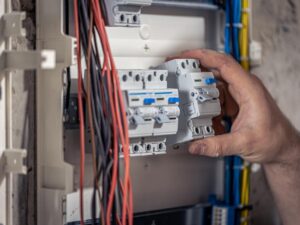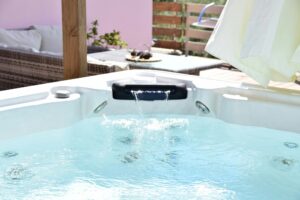How To Protect Your Home From Power Outages
For Pacific Northwest homeowners, untimely power outages generate a lot of stress and anxiety. It’s best to combat these occurrences by being as proactive as possible. Although these power failures are relatively hard to prevent, using these tips will help prevent power outages. You’ll protect your home, your family, and all of your essential items to the best of your ability.
Top 5 Ways to Prevent Power Outages
- Unplug appliances and electronics
- Use surge protectors
- Prevent frozen pipes
- Protect your home from water damage
- Backup power for your home
Unplug Appliances and Electronics
One of the first things to do when combatting a power outage is to unplug all of your appliances and electronics. Whenever a storm approaches, walk through your home to ensure these appliances and electronics are clearly disabled. When lightning is present, these strikes can seep into your home through wiring, exposing your appliances to potential damage.
That is why it’s extremely important to disconnect these items from their electrical power source. Unplug appliances containing electronic components, such as televisions, microwaves, and even computers. This will help to eliminate damage to your appliances from voltage surges once your electricity is restored.
If you have a full freezer or refrigerator, keep the doors/lids closed for as long as you can. These appliances are very well insulated and protect your food even if they aren’t running. The longer you avoid opening the freezer/fridge, the longer your food will keep.
It’s best to wait several minutes after a blackout occurs before turning your appliances back on. Doing so will reduce the demand on the power supplier’s electrical system. Taking these proper precautions will prevent extensive issues that can result if a blackout or storm surge is to occur. If some appliances or outlets aren’t working, check the circuit breaker to see if any circuits were tripped.
 Use Surge Protectors
Use Surge Protectors
Every homeowner experiencing a power outage should invest in surge protectors. An electrical surge is a condition occurring in the power supply because of the sudden change in the value. To protect from these spikes, an electronic device (surge protector) is installed in the appliances so that circuit protection from spikes and surges is prevalent.
Think of surge protectors as inexpensive coverage for your most elegant electronic items. For example, if you have an expensive television, it’s wise to purchase a surge protector in order to prevent power outages and lower the risk of potential damage. The same concept goes for any other essential electronic devices you use.
Types of Surge Protectors
Surge protectors can be classified into two categories, primary and secondary.
Primary Protectors
Primary protectors are large in size and do not need to fit inside the area where your appliances are located. Install primary surge protectors where the power lines enter your property to help prevent power outages.
Secondary protectors
Secondary protectors are noticeably visible and can protect appliances that get supplied directly from those power lines. These are the physically available variety of surge protectors that appliances are plugged into.
An example of a secondary surge protector would be something as simple as a power strip. Obviously, different items require different surge protectors, so decide which one is the best fit for your specific situation. Although these are less effective compared to the primary protector category, they are portable and more convenient to use.
Prevent Frozen Pipes
A critical way to prevent further damage from a power outage is to protect your pipes from freezing. Winter power outages generate the highest possibility of pipes freezing and then bursting. In order to prevent this, shut off your water and open all faucets to let them run dry.
This isn’t necessary for a short outage, but if it lasts longer than 24 hours and the temperatures have lowered below 40 degrees, take this precaution. In order to combat frozen pipes when losing power for a short period, run all of your faucets at a rapid drip.
While you’re at it, try to get a source of heat going. If you decide to use a kerosene space heater, be sure it’s vented to the outside and kept clear of any vents. Carbon monoxide poisoning is a real danger if you’re using heaters that need gas or other kinds of fuel.
Extended Cold Snaps
For extended power outages, keep your water pipes from freezing by shutting off the valve that brings water into your home. Next, turn off the water main where it enters the house and use blankets or insulation material to protect the inlet pipe, valve, and pump.
Beginning at the top of your home, open all faucets and flush toilets several times to drain the water from your plumbing system. Then go to the basement and open the drain valve. If your electric water heater works efficiently, the tank should keep the water warm for the first 48 hours after an outage.
However, it can freeze after a prolonged cold and should be drained after three days of below-freezing temperatures. Lastly, drain your hot water tank by attaching a hose to the drain valve and running it to a basement floor drain or outside.
Protect Your Home From Water Damage
A negative repercussion of electrical failure is the amount of water damage that can affect your home. If the cause of the outage is in fact a storm, there’s a good chance that heavy rain and possible flooding will follow.
It’s best to be as prepared as you can, so consider getting a sump pump with a battery backup or a generator. Your sump pumps protect your basement from water by pumping excess water from the pit to the exterior of your home. Once the water level in your pit reaches a certain height, it’s expelled via a pump and tube. The last thing you want is for the electric sump pump to be out of use and for your basement to fill with water.
Backup Power for Your Home
For some homeowners, buying a backup generator can be costly, but there are reliable funding options that homeowners can benefit from. The first thing to decide is which generator would be the most optimal to prevent power outages. The two generator types are portable and standby.
Portable Generators
Portable generators are less expensive and typically used for traveling or less emergency-type outages.
Standby Generators
Standby generators turn on as soon as the power is gone, while also powering your home’s entire electrical system. The only flaw is that this generator type can be very pricey.
A confident way to fund your new generator purchase is by using an equity loan. Using your home’s equity is a smart funding option because it has a lower interest rate than a personal loan or credit card. You can even use this lump sum for other electrical preventative measurements in your home.
Ensure your home and your family is safe by prioritizing the electrical safety measures that will protect your investment. For any other questions about protecting your electrical systems or generator installation, reach out to Prairie Electric.


